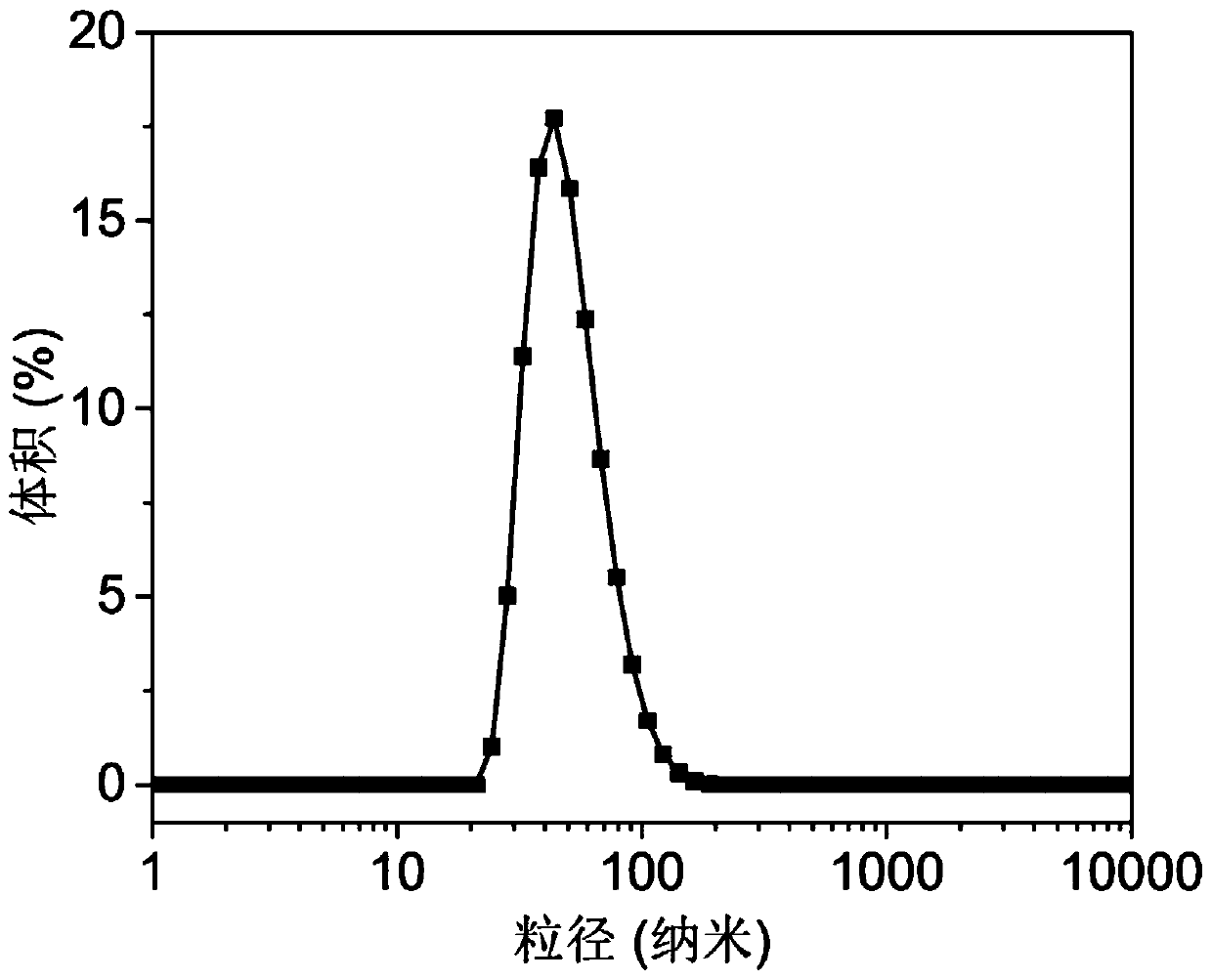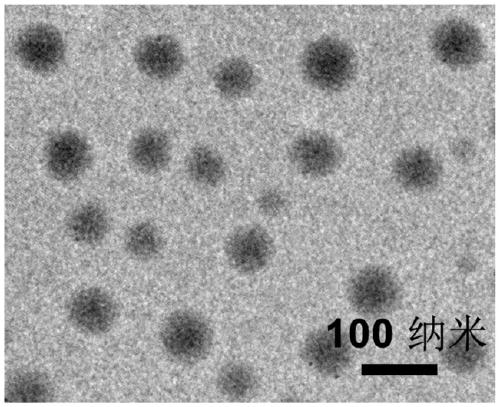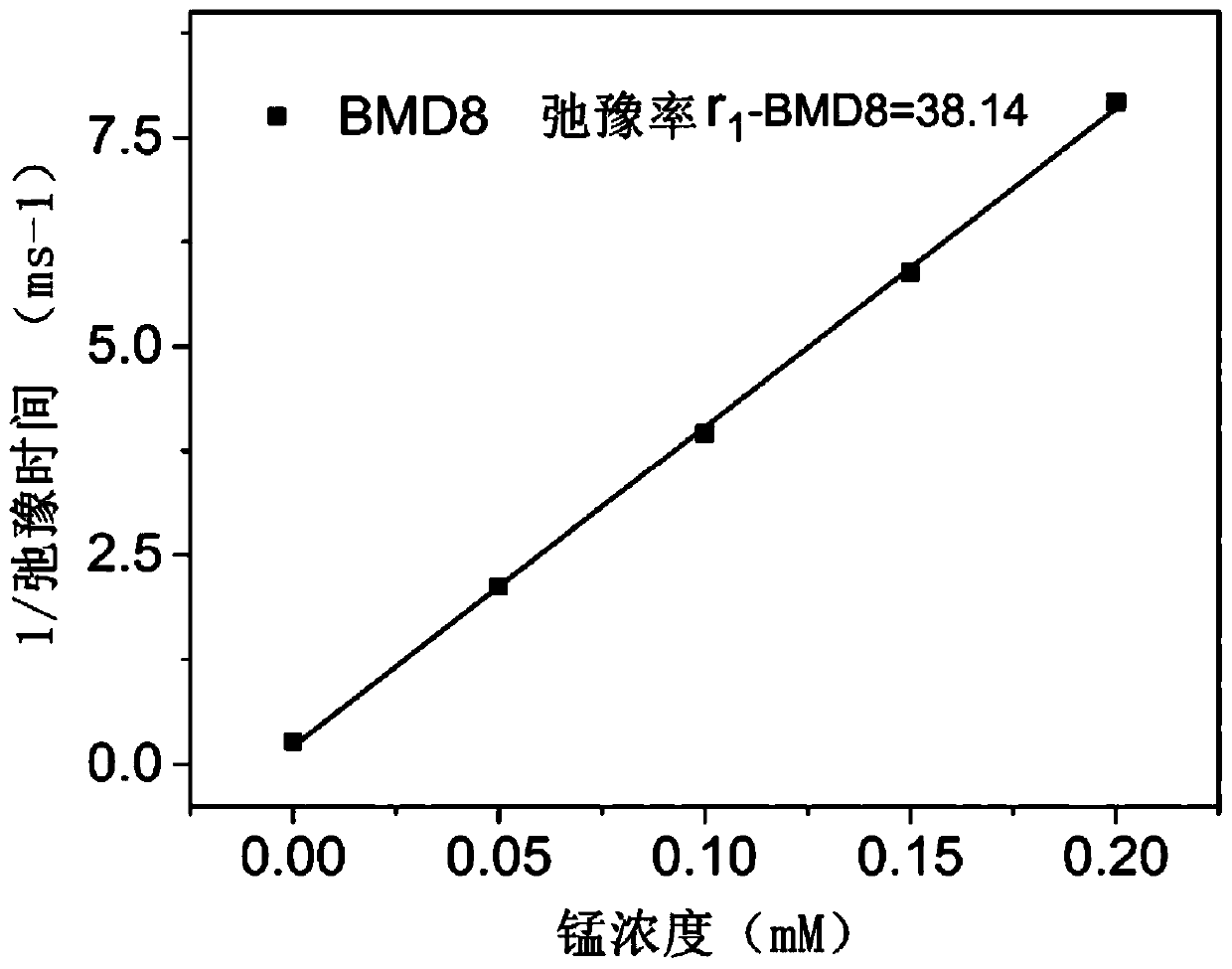A nanomaterial for tumor diagnosis and treatment based on manganese and dopamine, its preparation method and application
A nanomaterial, dopamine technology, applied in nanotechnology for sensing, anti-tumor drugs, nanotechnology, etc., can solve the problems of toxic side effects, low contrast intensity, low relaxation rate of small molecule gadolinium contrast agents, etc.
- Summary
- Abstract
- Description
- Claims
- Application Information
AI Technical Summary
Problems solved by technology
Method used
Image
Examples
Embodiment 1
[0045] 1. Preparation of nanomaterials
[0046] (1) Add 100 mg of dopamine and 200 mg of BSA to 100 mL of deionized water, then slowly add 30 mg of potassium permanganate, and react at room temperature for 2 h.
[0047] (2) Dialysis (Mw=10000) for 48-72 hours.
[0048] (3) freeze-drying or ultrafiltration and centrifugal concentration to obtain the nanomaterial BMD8.
[0049] 2. Performance analysis of nanomaterials
[0050] Such as figure 1 As shown, the average particle diameter of the nanomaterial BMD8 measured by dynamic light scattering (DLS) is 60 nm (distribution coefficient PDI=0.146).
[0051] Such as figure 2 As shown, the particle size of nanomaterial BMD8 observed by transmission electron microscope (TEM) is about 60nm, which is consistent with the particle size result measured by DLS.
[0052] Such as image 3 As shown, the manganese content of the nanomaterial BMD8 is 3%, and the relaxation rate R1 value is 38.14mM -1 ·s -1 .
[0053] Such as Figure 4...
Embodiment 2
[0063] Nanomaterials were prepared according to the reaction conditions in Table 1, and the technical process was referred to in Example 1. The properties of the prepared products were analyzed, and the results are shown in Table 1.
[0064] Table 1
[0065]
[0066] Note: In the above table, BMD: prepared nanomaterials; DA: dopamine; BSA: bovine serum albumin; KMnO 4 :potassium permanganate.
[0067] From the preparation of BMD1-5 in the above table, it can be seen that when the concentration of potassium permanganate exceeds a certain concentration, the relaxation rate of nanomaterials does not increase but decreases. When there is no BSA, both dopamine and potassium permanganate cannot form nanoparticles or the nanoparticles are too large, and the particles that are too large cannot be enriched in the tumor tissue through the EPR effect, and are easily trapped by the reticuloendothelial system. , not suitable for use as the magnetic resonance imaging contrast agent and...
PUM
| Property | Measurement | Unit |
|---|---|---|
| volume | aaaaa | aaaaa |
| particle diameter | aaaaa | aaaaa |
| concentration | aaaaa | aaaaa |
Abstract
Description
Claims
Application Information
 Login to View More
Login to View More - R&D
- Intellectual Property
- Life Sciences
- Materials
- Tech Scout
- Unparalleled Data Quality
- Higher Quality Content
- 60% Fewer Hallucinations
Browse by: Latest US Patents, China's latest patents, Technical Efficacy Thesaurus, Application Domain, Technology Topic, Popular Technical Reports.
© 2025 PatSnap. All rights reserved.Legal|Privacy policy|Modern Slavery Act Transparency Statement|Sitemap|About US| Contact US: help@patsnap.com



